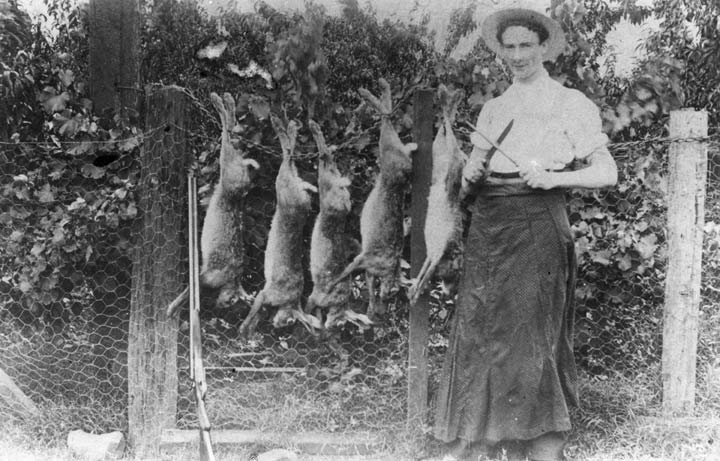 Preparing to skin rabbits, Queensland, c1920s
Preparing to skin rabbits, Queensland, c1920s
TLF ID R9215
This black-and-white photograph from about the 1920s shows a young man outdoors preparing to skin five rabbits that hang on a chain suspended between shoulder-high fence posts. The man is sharpening a long knife and is wearing a long wrap-around apron, boater hat and shirt with rolled up sleeves. A rifle stands upright against one of the fence posts.
